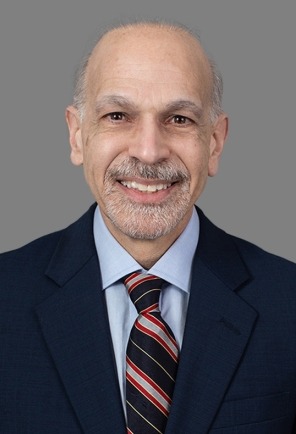Recapping 35 Years in 5 Industry Transitions: The Past Is Prologue - Part 1
NAB 2024 marked the 35th year since attending my first National Association of Broadcasters conference in 1989. This was my 33rd straight NAB, given that NAB was not held for two years due to the Covid pandemic. After the show, I reflected on all the substantive industry transitions that have taken place during those 35 years while also absorbing the introductions that took place this year. And factoring the length of time between past transitions and current introductions, it has become quite clear that:
- Not only is change inevitable in the Media and Entertainment (M&E) industry, but the rate of change is accelerating like nothing before.
Consider the following significant industry transitions over these last 35 years that have influenced the content creation-to-distribution cycle. This is certainly not meant to be an exhaustive or definitive list. It will be obvious that there are other developments that can be highlighted and that raise the question of omission. I have focused on the list below for a simple reason: I have been personally involved with these transitions in a software and solutions development capacity over a long span of time.
In any case, the developments below have undeniably shaped how content is made, delivered and consumed.
#1: The Introduction of Digital Nonlinear Editing Systems (DNLEs)
In 1989, one megabyte (MB) of external hard disk storage cost $15. A 600 MB external hard drive cost $9000. A motion-JPEG chip was not commercially available and would not be implemented in DNLEs for another two years. Digitized analog video was compressed via software at a ratio of 250:1 and four bits-per-pixel. And even though the picture quality of these early DNLEs was inferior to even VHS quality video, the transition from film and videotape editing had begun. Within seven years, the majority of film and television content was now being edited on DNLEs. For film editing, a 100 year process was transitioned within those seven years.
#2: The Music Industry: From a Physical to a Digital Supply Chain
Twelve years later, during the period from 2001 to 2004, another major industry shift occurred in the form of a transition from a physical supply chain to a digital supply chain for the music industry. As television programs featuring singing contestants increased in popularity, over the span of many weeks the number of contestants would be reduced, leading to the final winner and runners up. At that point, the manufacturing and distribution of compact discs (CDs!) for sale to the public would ensue.
The workflows were comprised essentially of recording, mixing and mastering. However, these activities were almost always undertaken in different locations. For example, recording of the program’s finalists could take place in Nashville, TN, mixing in Los Angeles, CA, and mastering in New York, NY. However, moving content from place to place was done physically — recordings were usually sent via airplane — and the process would take an average of 21 days. While this may not seem to be an inordinately long amount of time, consumer buying interest tends to decrease day by day.
By implementing a secure client-server architecture with content encryption, with precious intellectual property in the form of original recordings and then mixed, final songs traversed multiple locations using the open internet with no lost or pirated files. And the result was a reduction in the supply chain from 21 days to nine days. Having content available for consumption 12 days earlier led to millions of dollars in revenue, literally capitalizing on sustained consumer interest. Over time, of course, the supply chain would be reduced from days to hours.
#3: File-Based Workflows and Worldwide Digital Media Supply Chains
We move forward to the period of 2006–2010. The status quo of moving content from place to place for the M&E and Sports industries consists of the physical distribution of videotapes, film cannisters and digital hard drives. One particular sport has to transport and exchange an average of 130,000 videotapes every year! The use of fixed and leased video lines is the norm. Large-scale and expensive OC-3 (Optical Carrier 3) networks are used to move content from location to location via File Transfer Protocol (FTP). As a result, network connectivity is expensive but overprovisioned and underutilized.
In this period, managed file transfer systems arose using User Datagram Profile (UDP) to secure and accelerate the movement of content via inexpensive internet connections. The status quo timeline from the moment a program master was completed in, say, Los Angeles, CA, and made available in international territories was approximately three weeks. This was not an unusual period given numerous language dubbing and subtitling requirements compounded by the fact that there were physical shipments of content.
The turning point for revamping the digital media supply chain, in my opinion, was the release of “Avatar” in 2009. According to an article in The Hollywood Reporter in March 2010, “Avatar” required over 100 different versions that needed to be delivered for a same day-and-date release in 102 countries. This was assisted by utilizing centrally managed file aggregation and distribution methods, and I was intimately involved in creating some of the required solutions. Today, the three week supply chain has become 24 hours (or less) for worldwide distribution of feature film and television content.
Fast forward to 2016–2020. In 2016, the notion that the traditional broadcast facility could be revamped to function technically and operationally as a hyperscaler’s datacenter was not a consideration. Further, the idea that Serial Digital Interface (SDI) implementations for transmitting audio and video over coaxial or fiber optic cables could be supplanted by Internet Protocol (IP) using common off-the-shelf components (COTS) was also not a consideration.
However, today, broadcast facilities and outside broadcast (OB) vans have expanded upon and, in some cases, replaced SDI with IP-only systems, powered by many of the standards from the Society of Motion Picture and Television Engineers (SMPTE). Further, broadcast facilities are increasingly adopting datacenter approaches, leveraging virtualization and application scaling.
#4: Clouds and Real-Time Live Production
In 2020, while there were certainly a number of isolated experiments in Remote Production (REMI for Remote Integration Model), the Covid-19 pandemic brought forth virtual meeting solutions in areas such as medical and remote learning. At the same time, within the broadcast industry, only small numbers of personnel were allowed to enter facilities, to observe a wide range of safety protocols.
The combination of further IP adoption, the requirement to transition operations to cloud service providers (CSPs), and the flexibility of using CSPs and file transport mechanisms paved the way for REMI to transition to greater scale. Further, multiple, interconnected cloud instances and robust networking have contributed to achieving levels of low latency that are required for real-time switching of multiple cameras.
The result of these technology achievements is that routing live video streams into a public cloud for the most demanding live events used to have many hurdles. Today, those impediments are rapidly being removed and productions are occurring on a daily basis.
#5: AI: Too Early and Now Poised for Real Implementation
In 2022, automated closed captioning systems for broadcast began to integrate various methodologies and technologies that previously had not been incorporated. Automated captioning systems certainly had been in the market for some time and there are, at a minimum, at least 30 systems available from different vendors. But by 2022, many functioned in similar ways: Driven by the audio channel of a broadcast and using speech-to-text conversion, captions could be generated and made available on screen.
However, there were many impediments. Among them:
- Difficulty in distinguishing among multiple speakers
- Lack of multiple language support
- Inability to process industry-specific terminology
- High inaccuracy when encountering environmental conditions such as heavy winds and rains
- A requirement of thousands of hours of content for system training
Two years later, in 2024, significant advances are combining to address these previous limitations. Today, as a result of AI and ML, we have:
- The ability to distinguish among multiple speakers and isolate their individual audio “tracks”
- Support for 70+ languages
- Learning models to support industry specific terms
- The ability to isolate spoken audio and separate it from noisy environmental conditions
- High accuracy
To summarize Part 1, each new, meaningful change and major transition is happening faster and with more ramifications to the entire content creation-to-consumption process, and AI is a significant accelerant.
In Part 2, I will focus on some of the major themes of NAB 2024, the hype and promise of AI, and a view of both the challenges and opportunities for new and incumbent vendors.




